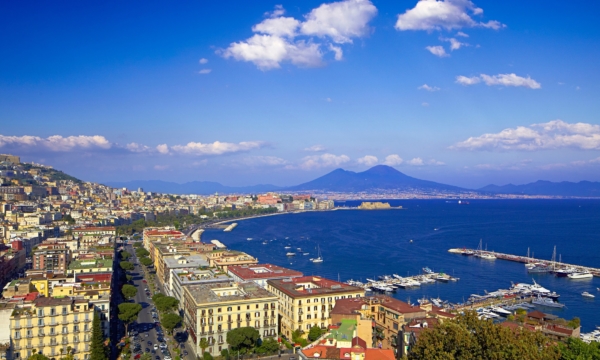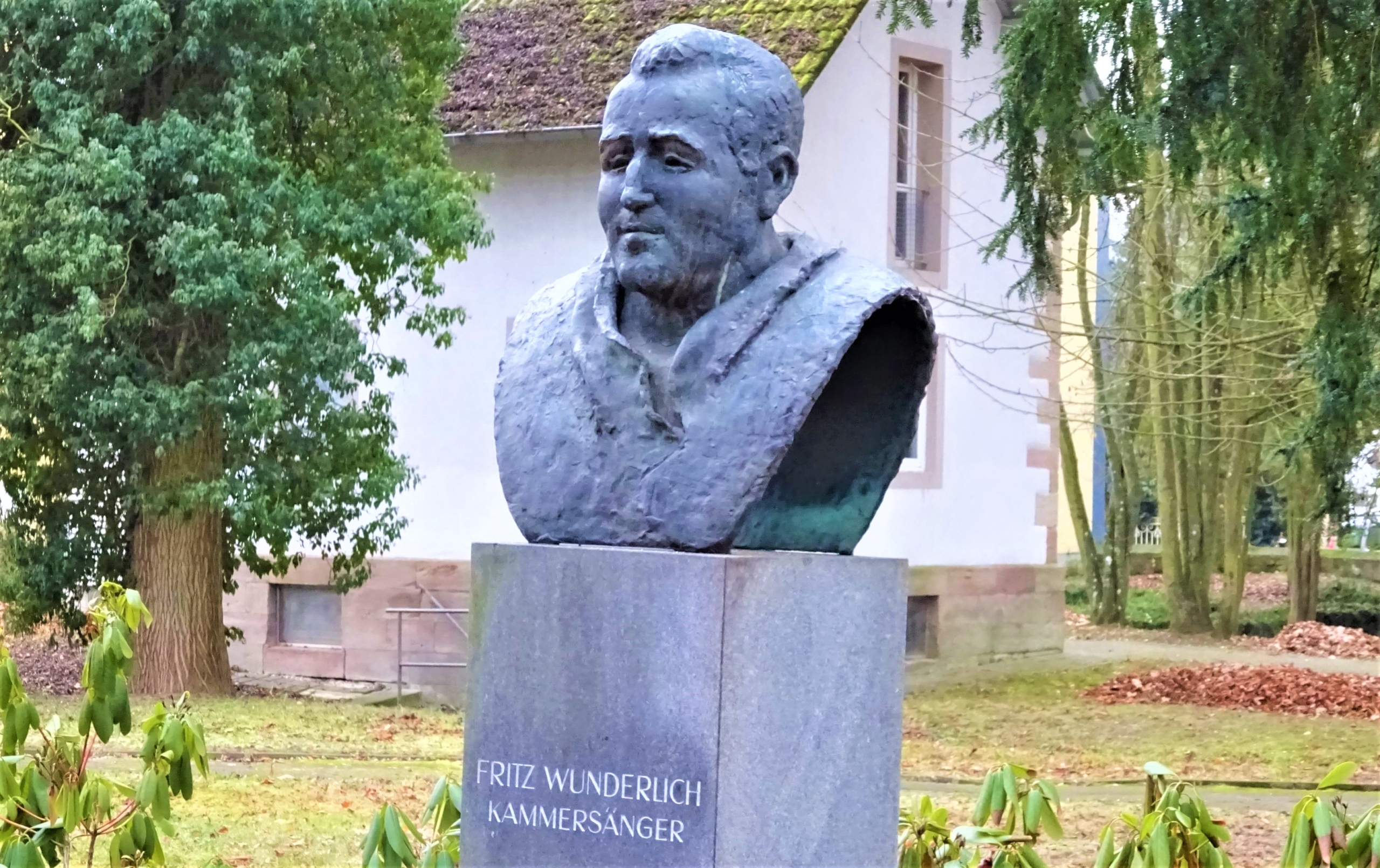Italian folk songs are often performed using an artistic technique the Italians have perfected. They call it “Bel Canto”, a name that literally means beautiful song or music.
The Harvard Dictionary of Music describes the vocal technique as placing “emphasis on beauty of sound and brilliance of performance rather than dramatic expression or romantic emotion,” which is why it has been considered the vocal standard for Italian opera for centuries. Bel Canto shuns emotionalism and highlights the quality of a person’s voice and performance.
Many of the best Italian folk songs are sung this way. Even a non-musical person would be familiar with some of the more famous ones, a few of which were brought to America by immigrants and popularized by Hollywood films: think of O sole mio, Torna a Sorrento, and Volare just to mention a few.
(And in case that list triggered memories of a moon hitting your eye “like a big pizza pie,” Dean Martin’s That’s Amore does NOT qualify as a real Italian folk song – it’s a pure Hollywood creation for his 1953 movie, The Caddy, with Jerry Lewis. Sorry.)
Among all the wonderful native Italian tunes, however, the lesser-known Neapolitan aria, Santa Lucia, ranks as Number One in my book. That’s probably because the first time I heard it, Fritz Wunderlich was the performer. And, to my surprise, he sang it in German, not Italian!
The song is so engraved on my heart that I distinctly remember the CD cover of the disk and listening to it over and over until I had to stop and go to bed! I was enchanted not only by the tune but also, and mostly, by the stunning voice of the tenor who performed it.
He died too young
Fritz Wunderlich’s name lends itself to an easy German phrase that anyone can understand: Wunderlich ist WUNDERBAR! (No need for translation, I’m sure.)
This is a common expression one reads in the comment sections of all the YouTube videos of his performances, and Wunderlich truly was wunderbar in every way an operatic tenor should be: his perfect technique, the amazing quality to his tone, his energy, and his ability to express the essence of any piece of music he sang.
He was born in 1930 to musical parents in a small town named Kusel (southwest Germany) near the Rhine River. When it was discovered that he had musical talent, he studied horn and voice for five years at the Freiburg music academy and launched into his musical career at the age of 25.
His entire operatic career lasted only a decade, and he died just before his 36th birthday in a tragic fall down a flight stairs during a hunting outing at a friend’s home in Heidelberg. The timing of his demise was even more tragic: he was scheduled to make his debut at the New York Metropolitan Opera only three weeks later.
His death was a true loss to the entire music world, but due to the marvel of modern technology, we can still bask in the sound of his gorgeous voice thanks to recordings.
A biographical website had this to say about him, which I think is perfectly expressed:
Although he never realized his due as a truly international star in his lifetime, Fritz Wunderlich has since become a favorite of opera lovers the world over. One has only to listen to his stunning voice to become a devotee for life. His vocal quality and strength combined with effortless expression and touching lyrical beauty make him one of the truly great tenors of the 20th century and probably of all time.
Not a saint but a place
When I first heard him sing Santa Lucia, my impression was that it was a song about Saint Lucy herself, who is one of the – believe it or not – fifty patron saints of the City of Naples!
The early church martyr, St. Lucy, competes with the principle patron saint of Naples, St. Januarius, whose blood liquefies every year. That’s kind of hard to beat. However, the truth about the song’s name is a bit more prosaic.
Santa Lucia is the name of the waterfront on the Gulf of Naples, called Borgo Santa Lucia. The song is actually the ballad of a Neapolitan boatman (whether mythical or historical, we’re not sure) as he gazes out upon the stunningly beautiful bay, where he makes his living ferrying people back and forth along the length of the vast waterfront.
From the picture below, it’s not at all difficult to tell why someone would fall in love with the place. It’s a tourist haven. (And yes, that’s Mount Vesuvius in the background.)
 Singing may have been this boatman’s way of drumming up business (as the refrain makes clear, “Come sail the sea with me!”)
Singing may have been this boatman’s way of drumming up business (as the refrain makes clear, “Come sail the sea with me!”)
Yet, there is something in the song that goes beyond a sheer pitch for customers. By his description of his home port, the hearer can tell that the boatman truly loves his native place, its waves, its winds, its heritage, its sheer beauty. It is anything but an adolescent infatuation.
Santa Lucia is not a love song but rather a ballad of devotion, an aria. It’s a moment of deep emotion, as if the seafaring lover of all things Neapolitan just can’t contain himself as he looks out on the scene and bursts forth into ebullient song.
Above all, it’s the boatman’s commitment that strikes the listener. We sense that it is his waterfront, and like all devotees of anything beautiful, he wants the whole world to love it as much as he does.
The boatman’s sentiment
Anyone who performs this ballad must dig down and find that same heartfelt sentiment of the boatman in order to make the song come alive. Wunderlich obviously achieved this effect – and he wasn’t even Italian.
Either way, from the very first notes of the sonorous mandolin to the rousing conclusion where the tenor surges up to that incredible High C, made so famous by Italian tenors, this song knows how to pluck your heart strings.
It was originally written in the Neapolitan dialect but was translated into the standard Italian version sometime in the mid-1800s. Unless you know poetic Italian or German (as in the video) you will have to go with the English translation, which of course, loses something of the feel of the original.
Still, with Bel Canto in any language, it’s all about the brilliance of performance and the quality of the voice that defines its impact. (Popular versions usually use only two verses, but I’ve included here the full six verses from a reputable translation. I’ve only edited out the repetitions to make for easier reading.)
The lyrics
(Translation by J.V. Presogna)
Upon this brilliant sea, a star of silver,
Across the gentle waves, the wind is sweeping.
Come help my little boat sail swiftly to the shore,
Santa Lucia! Santa Lucia!
Full sail with breezes fair, so gentle are they,
Oh, how this ship can feel, so fine beneath me,
All passengers aboard, come sail the sea with me,
Santa Lucia! Santa Lucia!
Between these sails that pull, forgetting supper,
Oh, pleasant skies above, how I adore you.
There are no grave demands, to quench desire,
Santa Lucia! Santa Lucia!
A sea that is so calm, a wind that’s playful,
A sailor’s guarantee, forget what ails you,
And he shouts from his heart, with all affection,
Santa Lucia! Santa Lucia!
Oh, my sweet Napoli, Oh, blessed soil,
Where nature smiles upon all of creation,
You are the harmony, you are the empire,
Santa Lucia! Santa Lucia!
Each hour to linger more, this lovely evening,
Each breath is filled with air, so fresh and welcome,
Come help my little boat sail swiftly to the shore,
Santa Lucia! Santa Lucia!
The performance (duration, 2:51)
As you listen to Wunderlich’s striking performance, I would draw your attention to two particular items (in addition to his gorgeous voice and that wonderful mandolin!):
- His perfect diction: even if you don’t understand German, you probably could spell every word of the song if asked because the singer’s pronunciation is so precise and crisp. Notice especially how perfectly he begins his verses, the opening “Sh…” of the German word for “beautiful”, Schoen; and the second verse beginning with the breathy, “HAL-des…”.
- German Zanta vs Italian Santa: When the letter “S” begins a word, Germans pronounce it as “Z” (to the ears of English speakers). Singing in his native language, Wunderlich thus pronounces Santa Lucia as Zanta Lucia – until the last verse, when he goes full Italian! Pay close attention as he ramps up his intensity to reach the pinnacle of the last powerful note – there he shifts to the Italian pronunciation of Santa (with a slightly kitschy crack in his voice – all the more endearing!). It’s wunderbar!

Soul Work
Beauty is its own gift to the world and a reward in itself. We all have some obligation to beautify our world, even if just in modest ways like well-crafted holiday decorations or environmental art. How drab would the world be without color, beauty, music, and art!
Spend some time today taking inventory of how you actively beautify the world. You don’t have to be a supreme talent like Fritz Wunderlich to offer something lovely to others, but you do have to offer what you have as a gift.
What exactly is that unique gift of yours for beauty? How do you give it? How could you offer it in a more significant way?
Never worry about who appreciates your contribution to beauty. If you offer it with heartfelt intensity, like the boatman’s song, God, the Source of all beauty, will appreciate it and bless your offering!




Leave A Comment